Out of a dark past comes a country unlike any other, full of culture, natural beauty, and happy people
Cambodia’s understated beauty
Cambodia is known for two things: its dark past and its spectacular monuments. Less well known is how interesting and beautiful it is as a destination – and how overlooked it has been until recently. Cambodia is not your typical resort destination. It has been popular with backpackers for a while and is increasingly gaining ground as a tourist destination for those looking for something that’s far from ordinary.
Visitors have been flocking to Angkor Wat for years, and with good reason. It is the world’s largest religious monument and probably the main reason why you’re thinking of visiting. However, it’s not the only temple to see. With over 70 temples on the complex, there are plenty of opportunities to wander around some of the more popular and the less busy ones and catch a mind-blowing sunrise and sunset – or both! Cambodia’s beaches are also beginning to rival those of Thailand, with their white sand and relaxed atmosphere. Explore a country that is growing rapidly and shedding its dark past to emerge onto the tourist trail with plenty to show off – delicious cuisine, cheerful people and costs that won’t remain low forever.
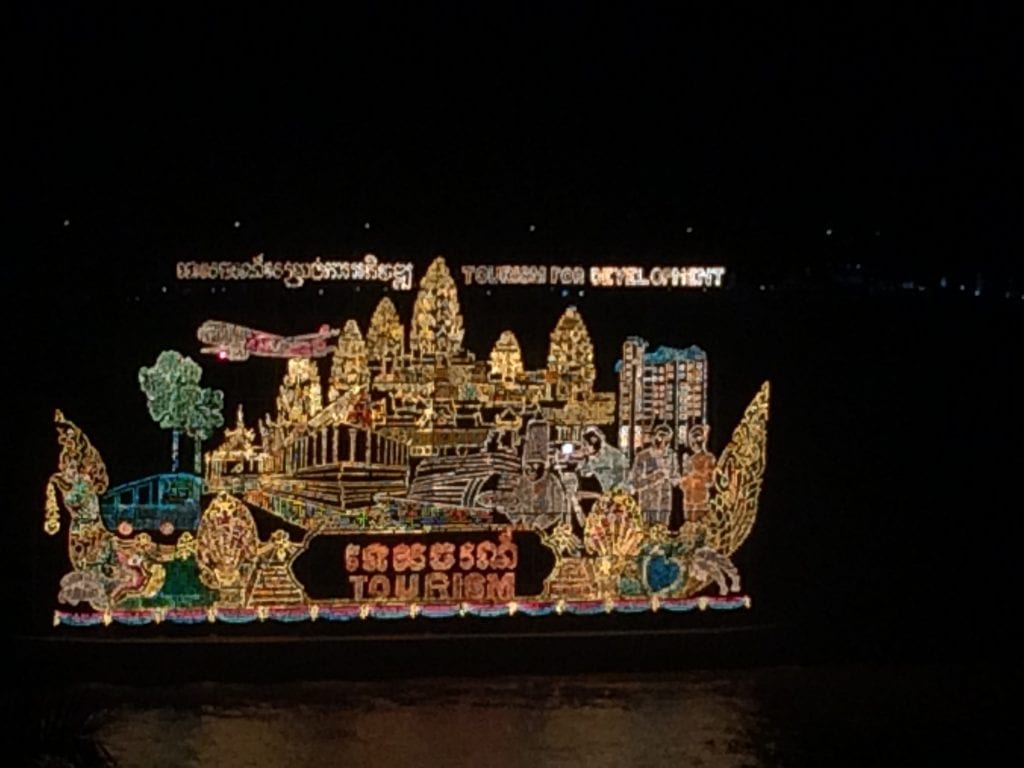
The happiest people in Asia!
Cambodia holds a special place in my heart. It’s the first place I flew into when I quit my job, and London, and went freelance so I could travel. I arrived with two nights’ accommodation booked and no return ticket – I was free, on my own, and frankly more than a little scared! I didn’t need to be. Cambodia and its wonderful Khmer people embraced me with open arms and I never looked back.
Cambodians went through one of the worst genocides the world has ever seen. It wasn’t all that long ago, either. Despite this, and the fact that almost a third of the population was killed, they are one of the friendliest people I have ever met. They have come out the other side and begun to rebuild their country, opening up to tourism to give people a chance to discover its treasures.
Getting to Cambodia
There are two international airports in Cambodia – in Phnom Penh (the capital) and Siem Reap (close to Angkor Wat). Neither has direct connections from Europe, Australia or North America, so you will have to connect at one of the larger Asian hubs such as Kuala Lumpur or Bangkok. You can also cross overland from Thailand, Laos and Vietnam by bus or car.
Most visitors will need a visa, except for a small number of other Asian nationalities. You can apply for one in advance or get one on arrival. If you get one on arrival you must have a photo with you and USD 36. In other words, you can’t use any other currency or a credit card. Visas give you 30 days in Cambodia.
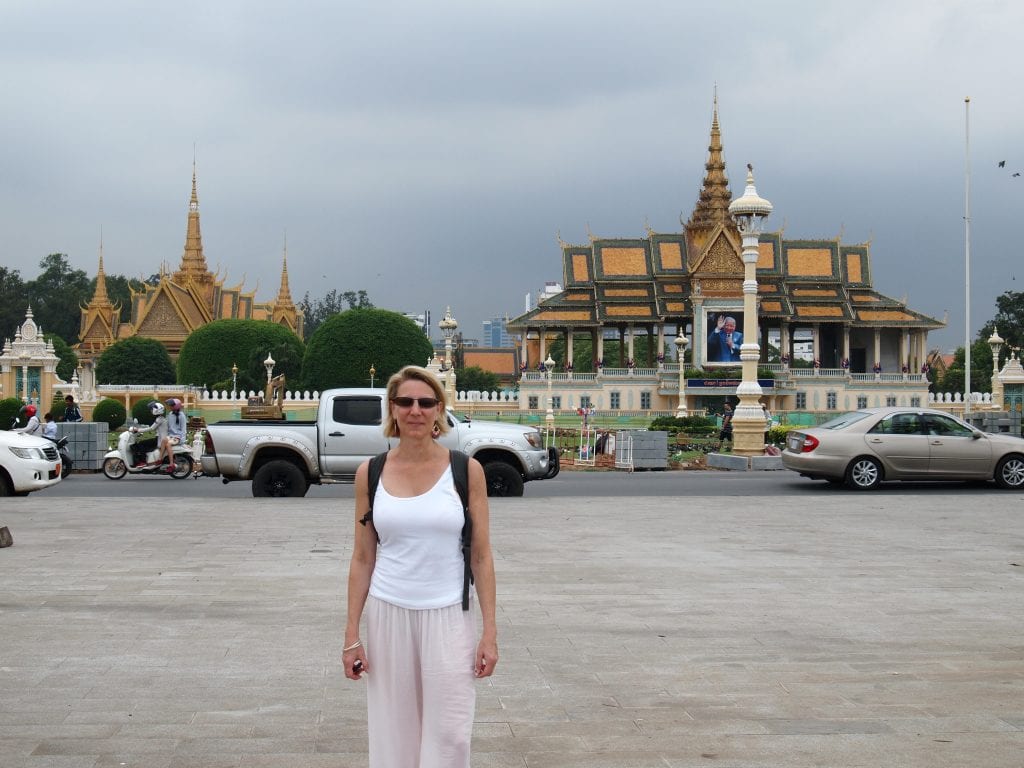
Travelling around Cambodia
Getting around town is quickest and cheapest in a tuk-tuk, and you won’t have trouble finding one. Be sure to agree a price before jumping on and don’t be afraid to negotiate – they expect you to! Elsewhere, you can hire scooters from hotels and hostels. Bicycles are also available to rent and a good idea for getting around the Angkor Wat complex independently. It is hot and humid, though, so a tuk-tuk or scooter may be an easier option!
For inter-city travel, buses are the best option, and I highly recommend Giant Ibis bus company. They may be a couple of dollars more expensive, but their level of service is much better than other bus companies. They have frequent services and offer a snack and water on board; there is also a stop for lunch at a local restaurant on longer journeys. Other companies are available, as are minibuses, but their comfort levels are not nearly as good.
For the solo traveller and backpacker
Cambodia is a perfect destination for solo travellers. It is easy to get around, there is plenty to see and do – as well as opportunities to stop and chill out for a while if that’s what you want to do – and it’s safe to travel solo. Being a relatively new country on the backpacker map, it also offers ample opportunities to meet like-minded travellers. It’s not full of romantic resorts for couples, nor the place for those only looking to get drunk and party. However, there are plenty of opportunities for a good night out, if that’s what you’re after!
The usual safety precautions apply. You should be particularly aware of your valuables in Phnom Penh where opportunistic thieves make the most of distracted tourists. Keep all valuables close to you, and never let anything hang off your neck or from scooters or tuk-tuks. Thieves riding on motorcycles can ride by and grab them. English is understood well enough and you shouldn’t have any problems getting by, especially in larger towns and cities and tourist areas.
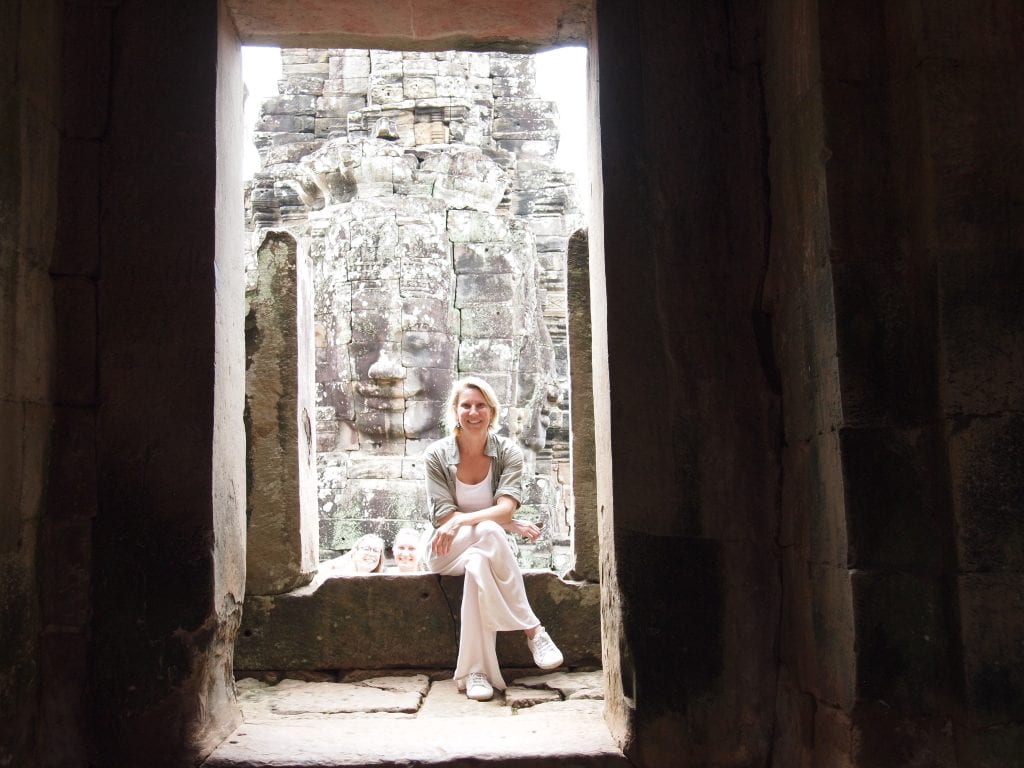
Advice for solo females
As with other Asian countries, modesty is important in Cambodia. While you don’t have to cover shoulders and knees to walk around town, you will have to in temples. It’s wise to keep the spaghetti-strap tops, short shorts and bikinis for the beach and take a more modest approach out of respect. Keep a light shirt or scarf in your backpack to cover your shoulders and arms for those temples and you should be ok.
With tourism on the rise, seeing solo women is not as unusual anymore, certainly not in touristy areas. In smaller, more rural villages you may get the odd question, or get followed by interested kids, but it’s unlikely to be malicious. Use your common sense and if you feel in any way uncomfortable, walk away.
Cambodia for the digital nomad
Cambodia’s WiFi network is decent enough to enable remote working. There are lots of cafes that serve delicious coffee and snacks (even full-blown lunches) that you can settle into for a couple of hours with your laptop. I also found excellent WiFi in hostels, and they tend to be quieter during the heat of the afternoon while everyone is napping or chilling out.
Best time to visit Cambodia
Cambodia is warm to hot all year round and has a distinct rainy season. The best time to visit is November to February when it’s warm (not too hot) and dry, but that is high tourist season. The hottest months are March and May, not the best for wandering around temples in the hot, humid sun. The rainy season is between May and October when you will get warm, humid days with sunny mornings and rainy afternoons – and fewer tourists.
Money in Cambodia
The local currency is the Cambodian riel (KHR), but the US dollar is the main currency. The riel is only used as small change and you will likely get change in that way. You do not need to have any in advance of arriving (in fact, it is not a currency that’s available outside Cambodia). ATMs will issue US dollars, and are typically available in larger towns and cities, and those that see lots of tourists. Get enough cash in advance if you are heading into rural areas.
A couple of things to keep in mind:
- Your US dollar bills must be in good condition. Defaced, torn, or bills with writing on them will not be accepted.
- Be aware of the condition of US dollar bills that you accept. You can ask for an alternate bill if it’s in bad shape in the knowledge that you cannot use it elsewhere. However, if your trip is short or coming to an end and you can exchange that bill or use it in another country without trouble, you could be helping someone out by taking it. In other words, if they can’t use it elsewhere, it is useless to them and they probably need the cash more than you.
- You will usually get change in riels which you can use as small tips or in local shops.
The exchange rate for riels is fixed at KHR 4,000 for USD 1, and around 5,000 for GBP 1.
Credit cards are not as widely accepted as they are in other Asian countries, so be sure to have enough cash on you, particularly for local restaurants and shops.
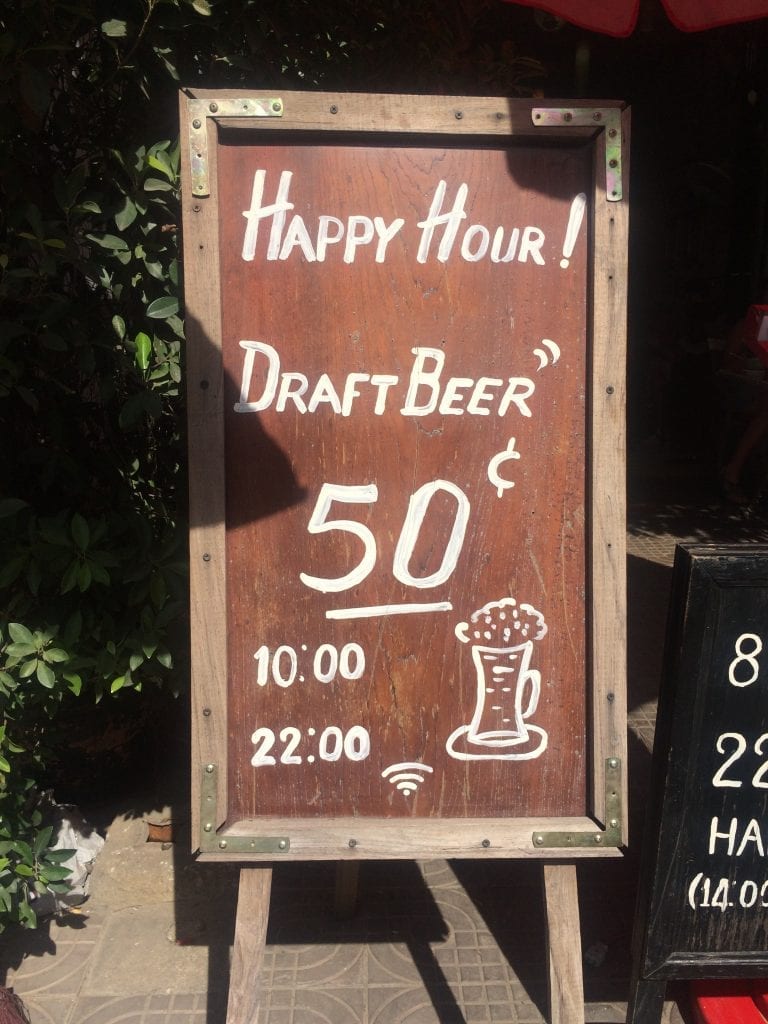
Cuisine and food in Cambodia
Cambodian cuisine, also known as Khmer cuisine, is somewhat similar to Vietnamese and Thai food, but I found it to be bursting with even more flavour and freshness – if that’s even possible! Almost every dish will have the four key flavours: salty, sour, bitter and sweet. Together, they blend to make the perfect combination that will make your mouth water.
Cambodian food is not as spicy as that of its neighbours, and chillies come as a side to let you spice up a dish to taste. Rice is the basic staple, served with almost every dish, and most plates will come with a variety of sides and dipping sauces.
Popular dishes include lok lak, consisting of beef slices in a sauce of pepper, lime and salt, served with rice and salad (by far my favourite; I ate it a lot!). Fish amok, a zesty curry with a coconut base, is another very popular dish you can find across the country. The sheer variety of curries, stews, stir fries and broths means you have plenty to choose from. And, of course, don’t forget the delicious baguettes and sweets – remnants of a French colonial past – found across the country, and especially in the capital, Phnom Penh.
Street food is popular, as are food tours and cooking classes, which include a trip to the market for the day’s freshest ingredients. You may find insects on the menu as well, often used in Cambodian food, but certainly not a requirement if you don’t fancy them! While vegetarian food isn’t as widespread as it is in other countries, it is widely available as it’s popular with Buddhist monks in the country.
Driving and riding in Cambodia
Within Phnom Penh there is little need to hire a scooter – there are so many cheap tuk-tuks around and it’s hard work dealing with the traffic. In the rest of the country, scooters are perhaps the easiest way of getting around and give you plenty of independence to take a detour or linger somewhere for longer, such as at Angkor Wat.
As with anywhere else, having an international driving permit will keep your travel insurance valid, should you need to use it. It will also save you from any fines if you are stopped by the police. Make sure you get a helmet with the scooter (even a basic one) and that you check both over for any scratches or dents (and take photos) so that you are not charged for them later.
Some riding experience is helpful, but with automatic scooters it isn’t strictly necessary. The road rules are similar across the region in that organised chaos rules. Keep to the speed limit, keep your eyes ahead, and use your horn to let others know you are planning to overtake. If you are a new rider, stick to quieter roads until you get the hang of it.
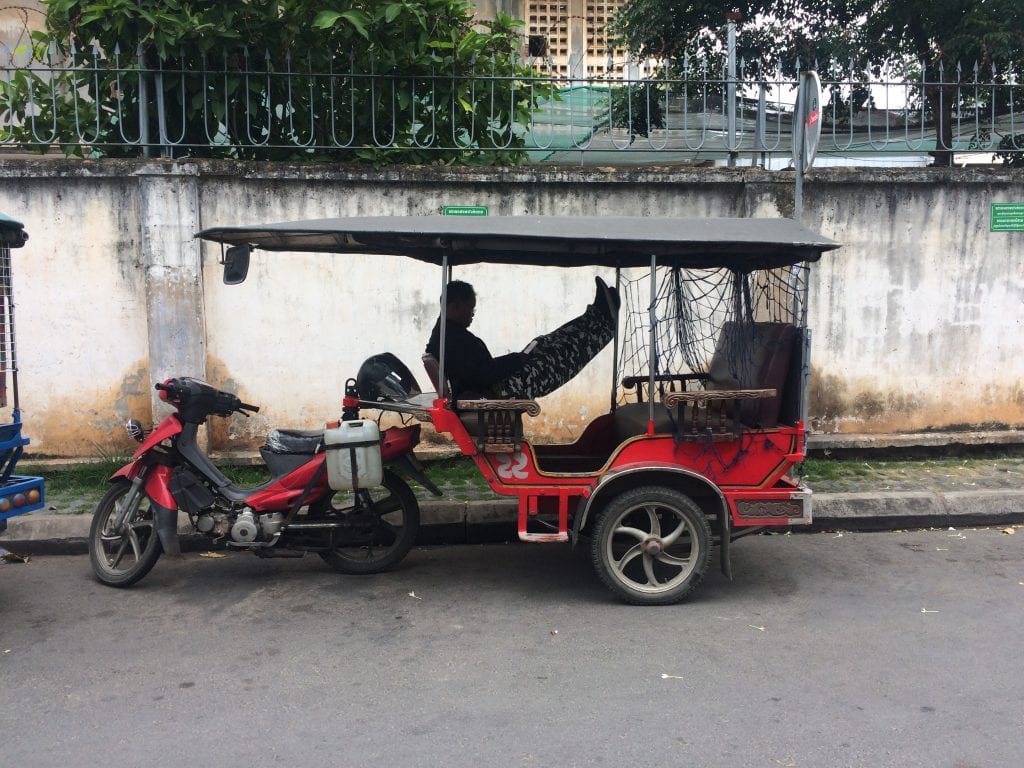
Things to do and see in Cambodia
There are a few obvious things to do in Cambodia: visit Angkor Wat, learn about the genocide in the Killing Fields and Prison S21 in Phnom Penh (hard but necessary if we are to avoid similar tragedies in the future), and chill out on a beach in Sihanoukville or Koh Rong. Perhaps less well-known experiences include the annual Water Festival in Phnom Penh, sailing on the Mekong River, or chilling out in Batambang.
More details coming soon on things to do and see in Cambodia. Sign up for an email alert once they’re up!
